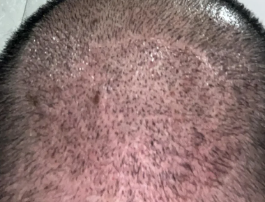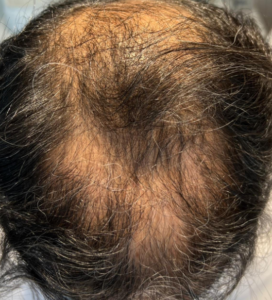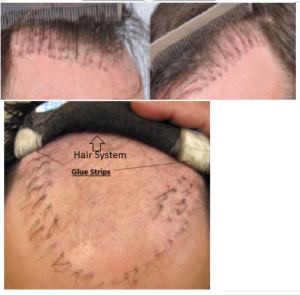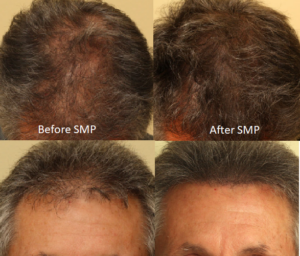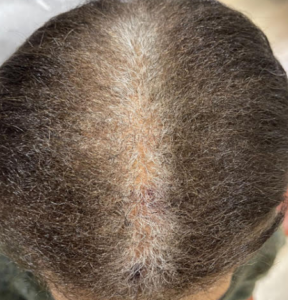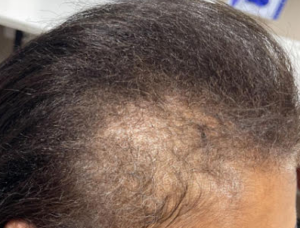I would like to know how to properly do this. Because I don’t know how lightly I should go or how long I should focus on/stab one area…I always seen to over do it slighly and make my scalp red have to stop after 2 or 3 days because of the sensitivity & flaking.
So how exactly do you guys that do it daily do it?
https://www.reddit.com/r/tressless/comments/1jl5w70/oculotoxicity_and_finasteride/
This is the first time I heard of any occullar problems from finasteride. I consistently report publications as I find them, and often, Reddit users perform considerable research on such issues, and they expand my daily studies (https://iovs.arvojournals.org/article.aspx?articleid=2690754).
Oculotoxicity and finasteride.
byu/HoldPrestigious1372 intressless
This is a comprehensive article written by Dr. Kavish Chouhan, a brilliant surgeon in Delhi, India whose intellectual curiosity I have always admired. The article reviews the many approaches to getting GREAT GRAFTS out with various FUE technologies.
I have seen this too often, that doctors do not give proper instructions for keeping the recepient area crust free. This worked at getting the crusts off and clearly pulled hair out. If the hairs he pulled out were done prior to day 9, he might have lost hair grafts forever. Shame on the doctor who did not foresee this in advance with proper instructions.
This is what surgeons did. Four decades of hair transplants, each session filling in the holes between the grafts. It often never happened as most men stopped at varying stages of this process, leaving them with Corn Rows of hair grafts. They would have to get two wigs, one for washing (as they often had a strong odor to them from sweat at the glueing point) and one to wash and dry. The men below had only a single session of plugs when they came to me for repairs. I performed thousands of repairs on men with this type of work and employed doctors to work with me. My office had 4 surgical rooms.
As shown in the second photo, most men went to hair systems (wigs) rather than show off their hair transplant surgery. This man shaved his head and wore a hair system glued to his scalp. Unfortunately, multiple sessions like this were the Standard of Care from 1959 into the 1990s. The concept was simply to do many sessions like this until you could not see the PLUGS. Unfortunately, they never got to look normal, regardless of how many hair transplant surgeries they received. Some men has as many as a dozen surgeries before they gave up.
I had asked myself why men would submit to such a barbaric surgery. The answer was (a) they wanted hair desperately and often came to the doctor with just thinning hair so the plugs were buried in their thinning and made them look better until they became bald when the hair around the plugs disappeared (almost 100% of the time), (b) the doctors employed salesmen who used pressure tactics, played off of the patient’s fear of going bald, and never really showed them the results they can expect, (c) it was the Standard of Care at the time and every doctor offering it, did it. It was shown in textbooks and taught in dermatology teaching programs, so the doctors who did this didn’t know better.
I had personal feelings of anger, as the doctor had denied these results as they made a good living, harming many men. When I entered this business in 1991, a famous doctor told me: “You will make a lot of money, like I have, just don’t make waves“. Of course, I never followed his advice and started my surgical practice doing large sessions of small follicular units on the very first surgery I performed. If the plugs were too close to the hairline, I would remove them, but if they were far back from the hairline, I would simply transplant hair around them and overwhelm the plugs in the forest of hair I would create. My work was loved by patients and hated by many of my colleagues. I published my work in peer-reviewed journals immediately. In 1994, I brought 23 patients (on my nickel) to the ISHRS hair meeting in Las Vegas. I brought the patients on the stage as I gave my lecture showing their before and after pictures, believing that if a picture was worth 1000 words, then the patients themselves were worth 10,000 words. After my lecture, the meeting was halted, and the audience of some 400 doctors walked across the stage (like a wedding reception) and looked closely at the patients. At that meeting, the debate with the “Old Guard” on the merits of what I was doing ended in 1994. What I was doing became the Standard of Care. It took about 6 years for most doctors to either quit or adapt. Change doesn’t come quickly for an industry the size of the hair transplants industry in the years before I entered the field. But change came, and men and women, across the world benefited.
I had a HT almost 7 months ago. In that time I suffered shock loss of some of my native hair. I’ve been on topical finasteride / minoxidil for 5.5 months now. It’s hard to tell now which hairs in my mid scalp are the transplanted grafts and my native hairs. My question is, if my miniaturising hairs were killed during the surgery, can finasteride bring them back over time?
I, plus doctors working for me, have performed thousands of hair transplants and used finasteride to prevent shock loss on all young men. We have seen shock loss on occasion, and certainly, I have seen many patients from other clinics that had not used finasteride to prevent shock loss. I have put them on finasteride and minoxidil and have not seen regrowth in these men who lost their hair from shock loss.
I am wondering if there may be any photos released from the amplifica trials. I really am hoping this product is successful. I cannot tolerate 5ARI’s so any nuggets you can share about the research would be incredible.
Unfortunately, even if Amplifica had the answer to your problems, it would have to undergo more clinical trials and then turn the drug into a real product. This second phase is often done by pharmaceutical companies, who would get involved in that process. We are a long way to that point. In addition, Amplifica has other medications in the pipeline, and they will have to go through clinical trials, as well. All that takes a lot of money. Not easy to get from where we are to what you want.
Does our beard also decrease in its active follicle count in old age? And if yes, is it to the same degree as the decrease in the hair at back and the sides of the head, or less?
Hi, i was just wondering can men with Down Syndrome go on fin, min and niz? There is a huge percentage of young bald men with Down Syndrome not helped by the fact their predisposed to have a higher chance of balding than other men. In light of that, I would have expected there would have been a huge worldwide campaign to raise awareness about this to their parents and siblings getting them to care for their son and/or brother’s hair. Perhaps though they are not medically advised to take any of these hair loss combatants.
https://apnews.com/article/hair-loss-rogaine-minoxidil-pills-fda-921b64565a1330ea3f78ff9f2c3b7b6d
Comment: A good read!
https://www.ema.europa.eu/en/medicines/human/referrals/finasteride-dutasteride-containing-medicinal-products
Governments continuously investigate medications, especially medications like various hair loss drugs that are known to have significant health side effects. The US FDA has done this as well for drugs like finasteride. We must wait for their conclusions before drawing any of our own.
The loss of hair frequently follows chemotherapy. This can often be protected using a “Cold Cap,” an iced hat that reduces blood flow to the scalp during chemotherapy. I have had two members of my family treated this way with the Cold Cap, one following breast cancer and the second following lung cancer. Both kept most of their hair during chemotherapy. In this particular woman, she should wait a full year before considering a more aggressive treatment. Drugs like Finasteride or Oral Minoxidil might reverse it. Microneedling may add value as well. Also, Scalp Micropigmentation works well for this type of hair thinning as a short-term solution that will give her instantaneous results.


